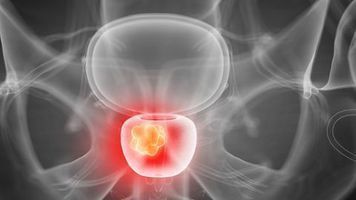Article
Bulking agents change paradigm for treatment of stress urinary incontinence
Author(s):
Key Takeaways
- Bulking agents have provided a non-surgical alternative for stress urinary incontinence, significantly altering treatment paradigms with minimal recovery time and favorable safety profiles.
- The introduction of bulking agents has reduced the need for traditional surgeries, which required general anesthesia and had longer recovery periods.
Eric S. Rovner, MD, discusses the use of bulking agents for stress urinary incontinence.
Eric S. Rovner, MD

Urology Times® is celebrating its 50th anniversary in 2022. To mark the occasion, we are highlighting 50 of the top innovations and developments that have transformed the field of urology over the past 50 years. In this installment, Eric S. Rovner, MD, discusses the use of bulking agents for stress urinary incontinence. Dr. Rovner is the director of the section of voiding dysfunction, female urology, and urodynamics in the Department of Urology at Medical University of South Carolina, Charleston.
Could you provide an overview of the development of bulking injections for stress incontinence?
Bulking agents have been around for approximately 80 to 90 years. Initially, a variety of substances were injected either as bulking or sclerosing agents back in the 1920s and 1930s. The first commercially available bulking agent was Contigen or glutaraldehyde crosslinked collagen back in the early 1990s. Subsequently, several other bulking agents have become available. Some have remained on the marketplace. Others were on the marketplace for a brief period of time, and then were taken off the marketplace. Currently, we have 4 bulking agents available in United States for commercial use, but there may be other ones in development.
Why should bulking injections for stress incontinence be on a list of innovations in urology?
That's a great question. It really goes back to the history of stress urinary incontinence surgery. Stress urinary incontinence surgery has been around for 100 years or longer, dating back to Howard Kelly [, MD], and the Kelly plication. But in essence, the treatment of stress urinary incontinence, specifically in a female, other than pelvic floor physiotherapy and specialized pessaries, really involved only a surgical procedure for the first 80 or 90 years. Whether it be a suspension or a sling or a plication, it was nevertheless a surgical procedure requiring general anesthesia. With the advent of commercially available bulking agents, it really changed the nature of the treatment for stress urinary incontinence, giving an option for the treatment of a very highly prevalent condition in female stress urinary incontinence, and giving an option that can be administered in the office—not requiring general anesthesia—with a very favorable safety profile. And even though stress urinary incontinence surgeries over the years were not particularly morbid or dangerous, they were associated with some adverse effects as well as prolonged convalescence—either in the hospital for a day or 2 or 3 or even at home for a day or 2 or 3 and then a rest period for weeks after the surgery where one couldn't lift anything heavy or do strenuous activities. Bulking agents changed the paradigm of stress urinary incontinence treatment considerably. Now, we had a procedure that could be done in the office with essentially no recovery time, very short convalescence, and minimal pain. That was really a huge advance in the treatment of female stress urinary incontinence, and it still remains today.
What future innovations do you anticipate in the realm of stress urinary incontinence?
It's always hard to predict the future. I suspect as time goes on, we'll find more and better—meaning less invasive and safer—interventions for stress urinary incontinence; hopefully office-based, but not necessarily. Obviously, an office-based therapy is most desirable for both patients and practitioners. Perhaps the next generation of bulking agents may be a little bit more durable than our current array. We look forward to having a bulking agent that perhaps is a one-and-done, if you will, or an office-based surgical procedure that will generate long-term durability with a nice safety profile.
Is there anything else that you'd like to add?
Our current array of bulking agents runs the gamut. Given the array of bulking agents and the proprietary delivery devices associated with some of these, , I think the practitioner should be very familiar and good at one type of delivery vehicle and agent. Patients will benefit if you're an expert in one type of bulking agent. It doesn't have to be that you use all of the bulking agents. Each one has advantages and disadvantages to some degree, but I would encourage the practitioner to be really good at one type of injection to benefit their patients.








